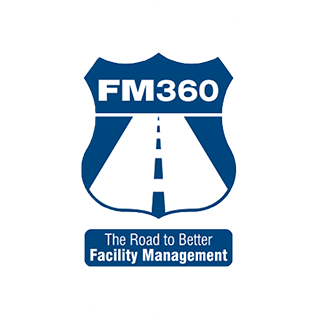 As facility professionals, we are pretty good at reacting in an emergency, dealing with difficult people, figuring out how to get a square peg into a round hole, doing more with less, and many other challenges that fly at us daily. However, the one key area where programs fail or struggle time and time again is in how they perceive, manage, and communicate the value of their facility program to their clients/occupants and, especially, to the executive level. For our facility organizations to be successful we have to manage them as a key business unit and translate the value of our program into terms that resonate with those that control the purse strings and direction of our overall company/organization – We must strive to get an “A” at the C-level!
As facility professionals, we are pretty good at reacting in an emergency, dealing with difficult people, figuring out how to get a square peg into a round hole, doing more with less, and many other challenges that fly at us daily. However, the one key area where programs fail or struggle time and time again is in how they perceive, manage, and communicate the value of their facility program to their clients/occupants and, especially, to the executive level. For our facility organizations to be successful we have to manage them as a key business unit and translate the value of our program into terms that resonate with those that control the purse strings and direction of our overall company/organization – We must strive to get an “A” at the C-level!
First, we have to see our facility programs as key business units that are critical to the success of our overall organization. Too often we fail to realize the impact we truly have on our organization’s ability to conduct business and ultimately, the bottom line. As discussed in the Rule of 100/10/1, an organization’s number one asset is typically people; if the people are not able to work or they are not doing so efficiently due to “creature comfort” or safety issues, then the company will realize that in revenue loss , reduced profit, etc.. The second most valuable asset for most organizations is their facilities with the third largest expense being energy. An organization has to have functioning facilities to be able to produce or provide their service and thus generate revenue. As facility professionals, we have significant effect on all three of these areas and ultimately our organization’s bottom line. We have to see our job and our facility program in this light.
Second, we have to learn a new language. Our organizations do not typically exist to operate & maintain buildings; rather the buildings are necessary in the production of whatever goods or services our organization provides. Thus, we must identify and understand our organization’s business drivers and how they’re measured. What is the cost of downtime or production loss? What’s the average revenue generated per employee? What’s your organization’s average profit margin? These are just a few of the questions that we, as facility managers, should understand and use when making our business case to purchase new equipment, hire a new engineer, or implement a new software. We cannot expect our clients or C-level executives to speak our language; we must learn to speak theirs. We must translate our successes and failures into bean counter language that resonates and aligns with the C-level. For example:
- A $10,000 reduction in utility expenses equals $200,000 in revenue.
- A sprinkler line failure closes school for a partial day, resulting in a make-up day that adds cost due to an additional day of transportation, teachers, utilities, etc., not to mention frustrated parents.
- An HVAC failure on a warm summer day causes people to quit work early or reduces their productivity (# hours impacted * avg cost revenue generated per employee)
- Installing a bypass loop reduces production downtime caused by scheduled maintenance, thus increasing the organization’s revenue and profit (# hours * avg revenue generated per hour)
Also don’t overlook the impact that facility failures and successes have on public relations/press and marketability. Your financial folks know how much it costs in marketing to sell business and manage image – ask them.
Lastly, you must align your department’s vision and goals with that of the overall organization’s. Now this seems like a no-brainer, but how many of you set clear, measurable goals that translate to those set by the C-level? For example, your organization wants to increase revenue by 15%; thus you set goals to reduce downtime by X% which would increase revenue by Y%. Or you could reduce your utility costs by 7%, which translates into Z% revenue increase. This means, of course, that you have to capture, trend, report, and manage this data, which we will talk about in the next Newsletter article. But you can capture all the data possible and still get a failing grade, if you cannot translate that data into value terms the C-level understands or cares about. We must think and speak like business professionals, because we are in the business of facilities…






